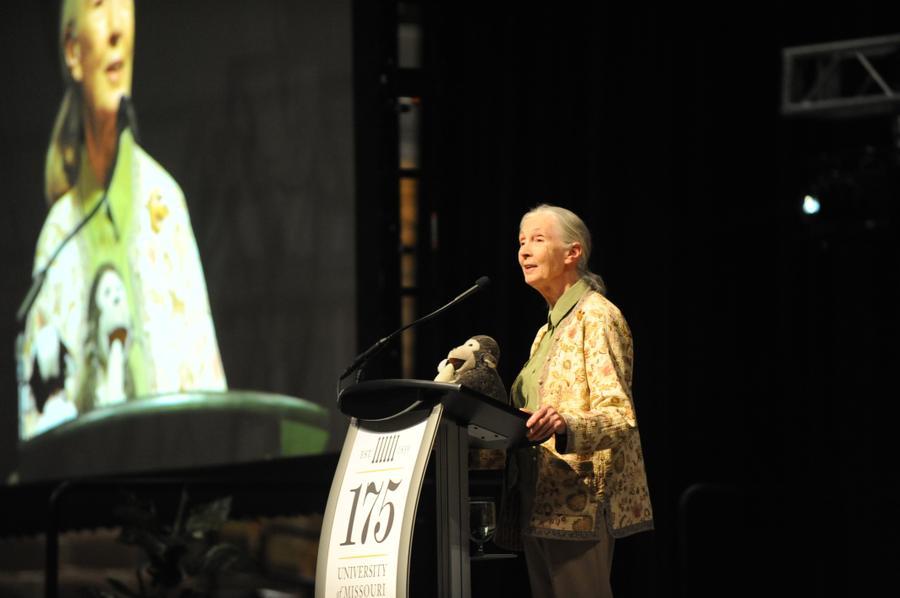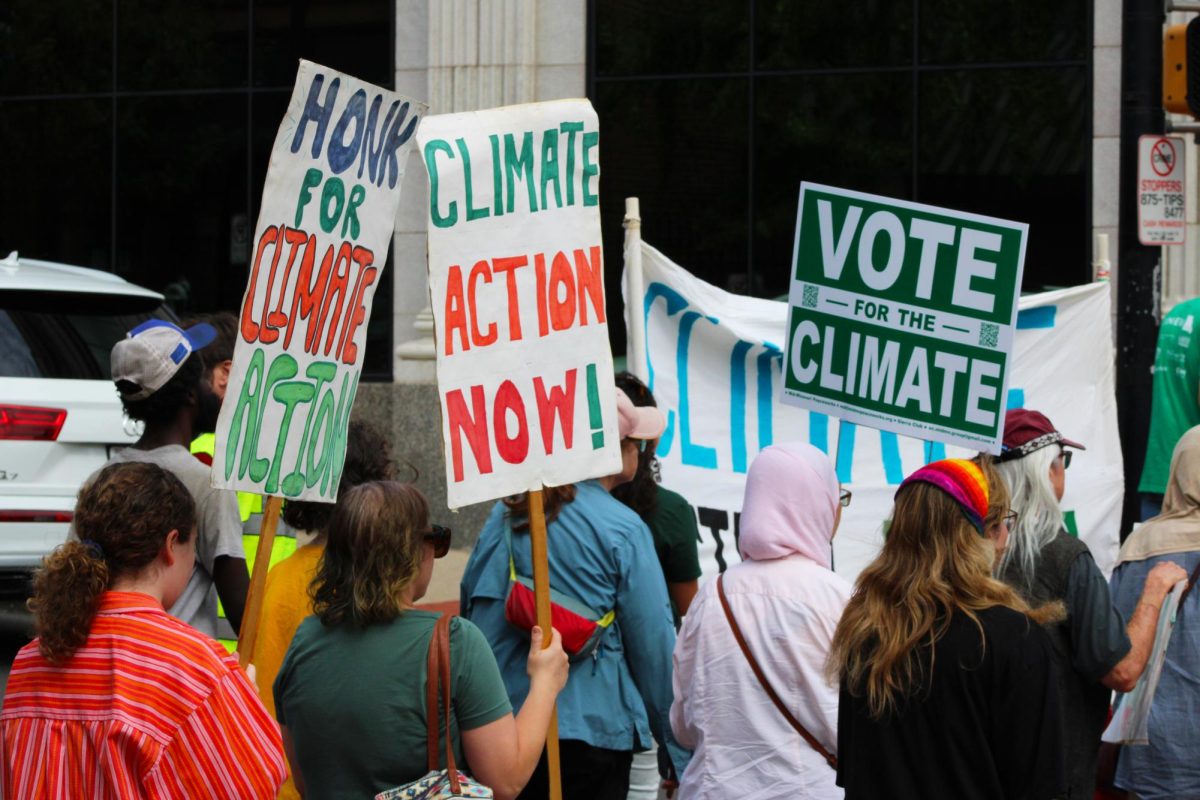“Jane, you have to take them outside. They need the earth. They’ll die in here,” Jane Goodall’s mother said when her young daughter brought “earthy earthworms” inside for the night to sleep in her bed.
And so the start of Goodall’s animal-loving career began.
After uproarious applause from a sold-out Mizzou Arena on Wednesday, Goodall responded with chimpanzee calls, the greeting of the people she worked with for so long.
Goodall said the reason she was standing on the Mizzou Arena stage is because of one person — her mother.
“I was born loving animals, and everyday she encouraged me to pursue my passion of working with them,” Goodall said.
From her youngest days, Goodall read animal books like “The Story of Dr. Doolittle.” She said she hoped that, like Dr. Doolittle, a parrot would teach her animal languages, and for a while she managed to convince her friends that she had the capability of talking to animals.
The novel “Tarzan of the Apes” was another that resonated with Goodall during her childhood. After reading it, she said she knew two things: first, that Tarzan “married the wrong Jane,” and second, she was going to go to Africa and live with the apes.
And she did just that.
“I was living my dream,” Goodall said of doing field research in Tanzania. “I was at home.”
When she first arrived, the chimpanzees were scared of her; they were “very conservative.” It took months of waiting and disappointment to make a breakthrough.
David Greybeard and his pal Goliath, two chimps from the area Goodall was working in, allowed her to come closer and watch as they used a makeshift tool to extract termites from a tree. The discovery of animals being able to use tools was what encouraged the National Geographic Society to fund Goodall’s research.
“I was absolutely fascinated to watch the bonding between the mothers and their offspring and the brothers and sisters,” Goodall said. “They show love, compassion and altruism like us.”
Since her work with chimpanzees took off, Goodall has branched into other work that has benefited the environment and started organizations such as Roots and Shoots.
“It’s a whole new world out there,” Goodall said. “It’s a whole new fascinating world.”
The work she does helps alleviate climate change, pollution, lack of fresh water, poaching and so much more.
Throughout all her work with different organizations, Goodall discussed how she remains hopeful against all the devastation and turmoil in the world.
“My greatest reason for hope is the young people,” Goodall said. “When the young people take action in the things they care about, good things happen.”
She showed one of her symbols of hope, a stuffed monkey named Mr. H, given to her by a blind ex-Marine-turned-magician.
Sophomore Kayla Benda said she found inspiration in Goodall’s lecture by the way she talked about the future and the steps college students can take to make the world a better place.
In a similar light, freshman Tristan Detzel said he was moved by Goodall’s speech to the students in the audience.
“It’s not too late to make a difference in this world,” Detzel said. “Jane Goodall used chimpanzees as a pathway to learn more about the connections between animals and humans. She spent her life traveling worldwide to share her story, and she has given our younger generation hope.”
Goodall emphasized that the human race has to form a bond in order to make positive change happen.
“We have to stick together and join hands around the world and start making things right,” she said. “Only when we learn to live with our head, our heart and harmony is when we learn to really live together.”








